About Keyboards ...
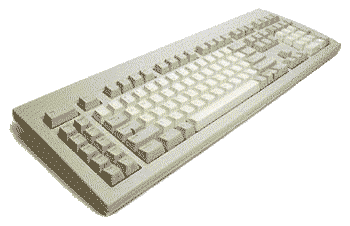
Did you ever take a close look at the keyboard of your computer ? Have you ever wondered why the keys are laid out the way they are as AZERTY, QWERTY or even more exotic QWERTZ ? The answer is very simple: to make the transition easier for those who were used to the old Remington or other Underwood’s that were laid out in this way. But this just replaces the question: why, on earth were the keys of these typing machines then laid out in this way ?
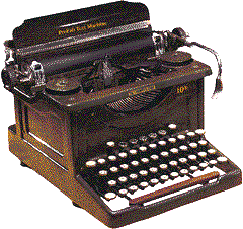 It is sometimes said that keyboards were designed in such a way as to slow down the typist. This is wrong; it was, on the contrary, designed to allow faster typing, but under a constraint now long obsolete. In early typewriters, fast typing using nearby type-bars jammed the mechanism. So Christopher Latham Sholes, the inventor of the QWERTY keyboard, fiddled the layout to separate the letters of many common digraphs (he did a far from perfect job, though; "th", "tr", "ed", and "er", for example, each use two nearby keys).
It is sometimes said that keyboards were designed in such a way as to slow down the typist. This is wrong; it was, on the contrary, designed to allow faster typing, but under a constraint now long obsolete. In early typewriters, fast typing using nearby type-bars jammed the mechanism. So Christopher Latham Sholes, the inventor of the QWERTY keyboard, fiddled the layout to separate the letters of many common digraphs (he did a far from perfect job, though; "th", "tr", "ed", and "er", for example, each use two nearby keys).
The answer is surprising: our high-tech computers are still functioning with characteristics imposed by obsolete, mechanical constraints.
In fact, the layout of a keyboard is a minor detail.
Blind typing has to be learned one way or another, independent of the layout of the keys.
The ergonomic qualities of a keyboard are much more import than the layout of the keys, provided that the user is used to this layout and doesn’t have to change his habitudes.
... and Schools
The word pedagogy itself stems from the ancient Greek, where it designed a slave, old or crippled, who, not being able any more to do some useful work, had to look after the children of his master. It has been quite a way from the slave to the teacher and from family education to classrooms (interestingly, back to home schooling is a rapidly growing phenomenon in the USA). But let’s have a look at schools first.
Under the Merovingian Kings the court school trained the young Frankish nobles in the art of war and in the ceremonies of the court. This was not, however, a school in the modern acceptation of the term. Whatever education there was of the literary kind at that time was imparted at the monastic and cathedral schools.
With the accession of Charlemagne (768) a scheme of educational reform was inaugurated, first in the palace school itself, and later, after the arrival of Alcuin at Aachen in 782, in the various schools established or reformed by imperial decrees throughout the vast empire over which Charlemagne reigned.
The master read (legere was synonymous with docere) while the pupils took down his dictation in their wax-tablets. In the near future, as you will discover, pupils will return to tablets : digital tablets. The curriculum ? Elements of Christian Doctrine, plainsong, the rudiments of grammar, and perhaps some kind of manual training. In the monastic and cathedral schools the curriculum included grammar (corresponding to what we now call language-work in general, as well as the study of poetry), rhetoric, dialectic, geometry, arithmetic, music and astronomy. (see this link for more information)
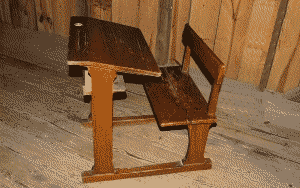 Although the curriculum has changed considerably since the 8th century, teachers still docere, still transmit their knowledge orally to pupils, who have to write it down or look it up again afterwards and study it in textbooks.
Psychological and pedagogical research has already long-time ago stressed the need for individualised teaching.
In 1900, Ellen Key wrote in her remarkable book The Century of the Child "I should like to set down here briefly my dreams of a future school, in which the personality may receive a free and complete self-development.".
More than a century later, this still remains a dream, as the organisation of schools into classes with children, grouped by age, taught by a teacher who has to adapt to a "general mean level", does not facilitate such a free and complete self-development.
Although the curriculum has changed considerably since the 8th century, teachers still docere, still transmit their knowledge orally to pupils, who have to write it down or look it up again afterwards and study it in textbooks.
Psychological and pedagogical research has already long-time ago stressed the need for individualised teaching.
In 1900, Ellen Key wrote in her remarkable book The Century of the Child "I should like to set down here briefly my dreams of a future school, in which the personality may receive a free and complete self-development.".
More than a century later, this still remains a dream, as the organisation of schools into classes with children, grouped by age, taught by a teacher who has to adapt to a "general mean level", does not facilitate such a free and complete self-development.
There is but one conclusion possible: schools and education are still functioning with practices imposed by obsolete, out-dated constraints. While the layout of a keyboard can be considered as a minor detail, the functioning of education isn’t. The future of our society depends upon it. The use of computers in education will make the necessary changes possible !
Outdated practices sounds incredible ? Let’s take a quick look at another aspect of the history of education.
... and Paper
 Paper was pretty expensive once and hornbooks were made so children could learn to read without using a lot of paper.
A hornbook was usually a small, wooden paddle with just one sheet of paper glued to it.
But because that paper was so expensive, parents and teachers wanted to protect it.
So they covered the paper with a very thin piece of cow's horn.
The piece of cow's horn was so thin, you could see right through it.
That's why these odd books were called "hornbooks".
Paper was pretty expensive once and hornbooks were made so children could learn to read without using a lot of paper.
A hornbook was usually a small, wooden paddle with just one sheet of paper glued to it.
But because that paper was so expensive, parents and teachers wanted to protect it.
So they covered the paper with a very thin piece of cow's horn.
The piece of cow's horn was so thin, you could see right through it.
That's why these odd books were called "hornbooks".
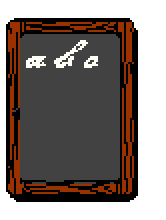 Even though paper had become commonplace by the late 1800s, it was still considered too expensive in rural areas for the demands of children in school.
Up until 1900, many children still used slates for writing their assignments.
By the way, slates were advertised in newspapers as early as 1737 and slates with wooden frames appeared around 1749.
For some of us, slates still are vague souvenirs, as they were used by kids in some children’s books we read when we were young and beautiful.
Even though paper had become commonplace by the late 1800s, it was still considered too expensive in rural areas for the demands of children in school.
Up until 1900, many children still used slates for writing their assignments.
By the way, slates were advertised in newspapers as early as 1737 and slates with wooden frames appeared around 1749.
For some of us, slates still are vague souvenirs, as they were used by kids in some children’s books we read when we were young and beautiful.
More than a full century was needed for schools to adopt fully the "modern" technology of paper. But it was and is an inescapable evolution: as schools have to prepare children to be the responsible citizens of the future, they have to follow the evolution of society. And sooner or later, they will have to accept and use fully all the aspects of modern information technology.
Actually, that technology is still complicated, needing sophisticated and not so portable devices, connections, wires, telephone lines, But wireless communications (so called WiFi Lilypads) are on their way (and already implemented in some schools), flexible screens do exist and will be widespread in the near future. One does not need a crystal ball to predict that pen-like computers, such as the one represented below, offering everywhere instant and wireless access to the Internet, will become part of the normal equipment of every student (if you want to, you can take a look at a video of Philips Research showing this technology)
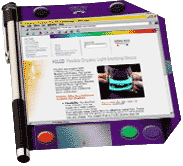
Illustration courtesy of Universal Display Corporation
The future !
The venue of textbooks broadened the horizon of learners: they were no longer dependant upon the spoken word of a teacher, but had access to other sources of information, with more and richer details than any teacher could ever give them, with better illustrations, better structured learning materials, better graphics,
Computers, through their lightening fast access to the Internet, shall broaden the learners' horizon even more. Instead of a couple of hundred pages of information, they will open millions of pages of information, offering much more than the best textbook can:
- Instead of last year’s statistical data, they will offer accurate, up to date information. Do you know the latest estimate of the number of European citizens ? Well, you can find it in the CAI World Factbook
- Instead of static illustrations, they will offer dynamic representations. Isn't the simple animation of the pen-like computer with its flexible display much clearer than a long description ?
- Instead of a colourful but static picture of any place on Earth, they will allow students to zoom in from satellite altitude into any place on Earth. You are sceptic ? Then take a look at the NASA WorldWind site
- And even more: through simulations, they will allow learners to interact, to influence the parameters of a model in order to see for themselves what happens if. What about setting wind speed and observing its effects on volcano eruptions ? You can try it at The Strombolian Eruption Simulation site
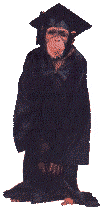 Even with the best textbook, learners are still dependant upon the interaction with human teachers who can evaluate if they correctly understood and assimilated what they learned.
A textbook simply can not take care of the material organisation of the learning process, can not correct an exercise, can not grade a student and can not give the necessary individual feedback.
Even with the best textbook, learners are still dependant upon the interaction with human teachers who can evaluate if they correctly understood and assimilated what they learned.
A textbook simply can not take care of the material organisation of the learning process, can not correct an exercise, can not grade a student and can not give the necessary individual feedback.
What will electronic teaching programs offer more than the combination textbook + teacher ? Of course, they will never be capable to replace direct human contact. But, because they will not have to cope with 20 or 30 students listening at the same time to the same words, they will be able to give full and undivided attention to every student. In this way, they will be able to really individualise the learning process. Not aiming, like a human teacher in his class has to, at a general mean level, technology supported learning will be offering to every student what he needs when he needs it, presented in the way that suits him best. Oceans of data and rivers of knowledge will be open to all, whenever and wherever they want. In this way, teachers will no longer be the source of knowledge, but will be able to concentrate on the noblest part of their task: organise educational experiences adapted to individuals.
Ellen Key’s impossible dream will come true, more than a century later.